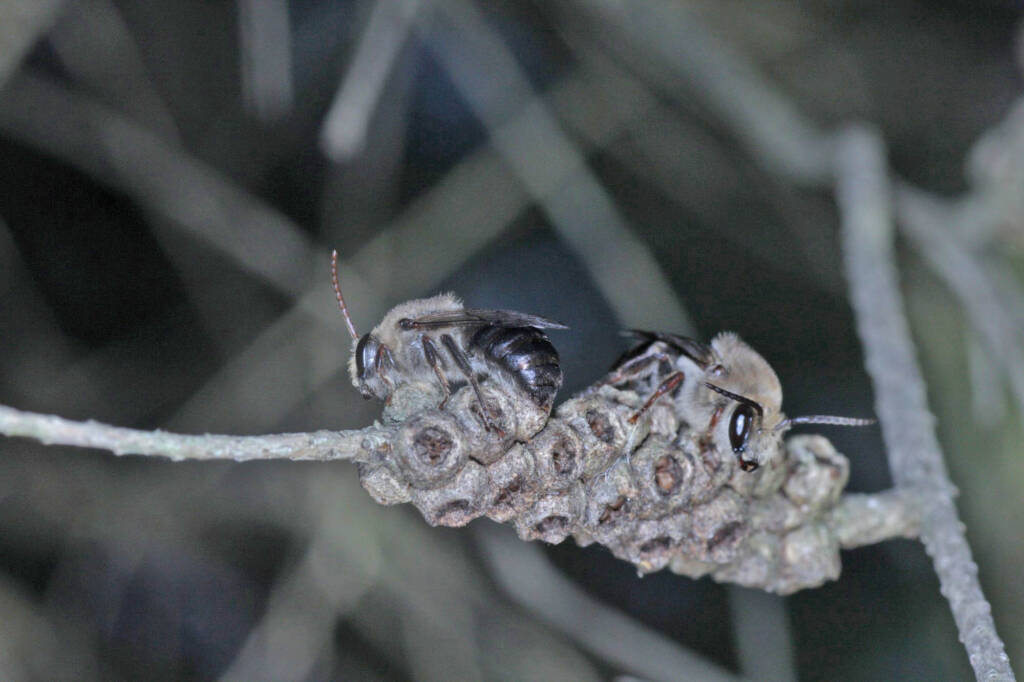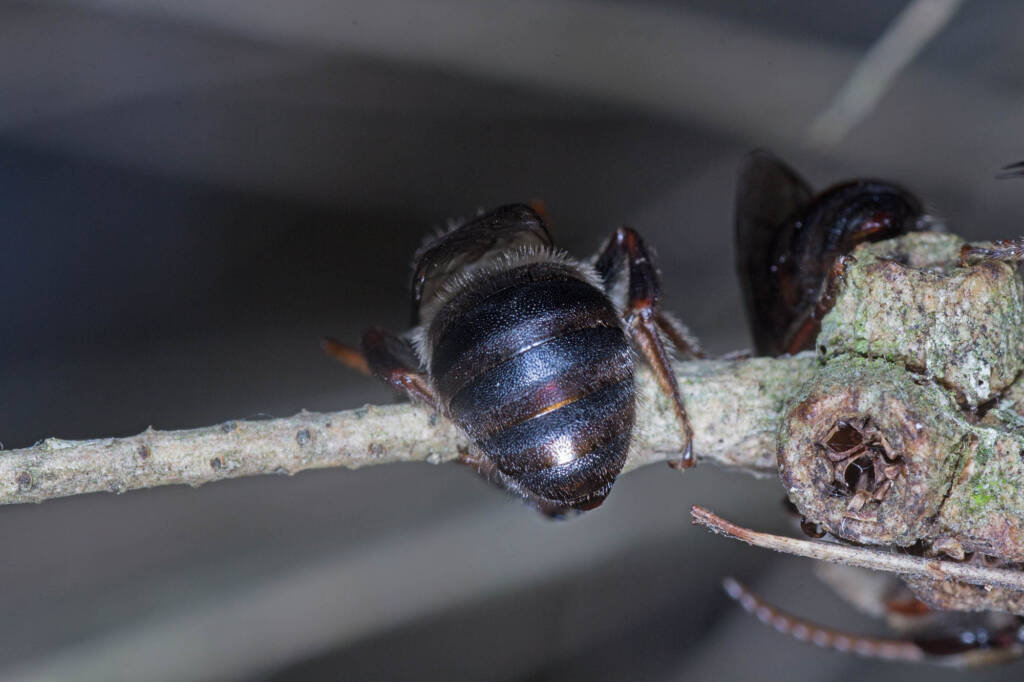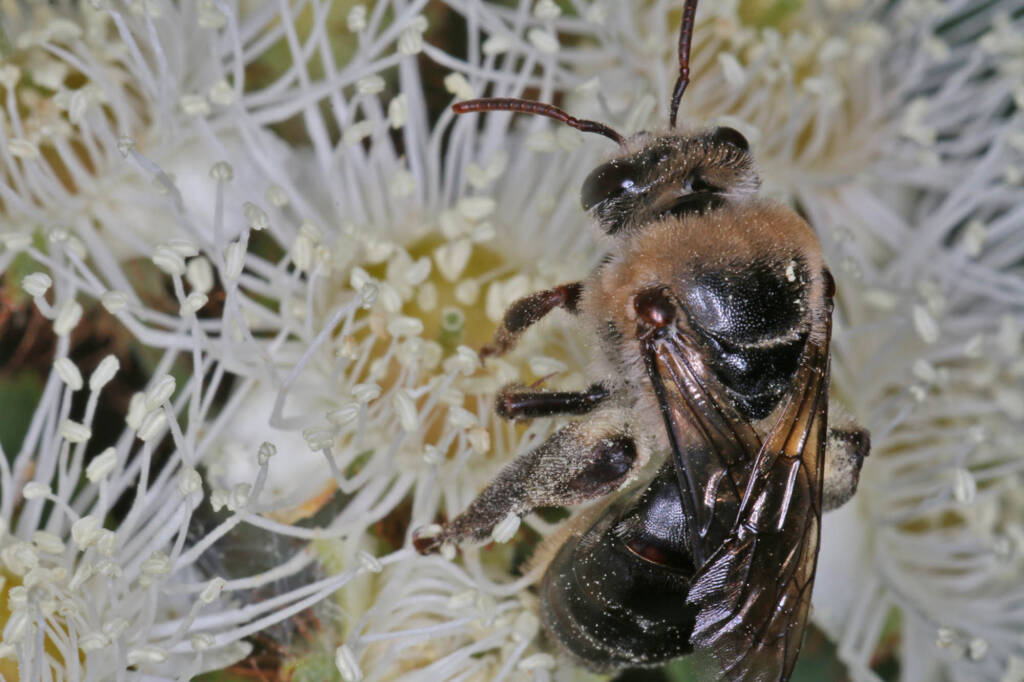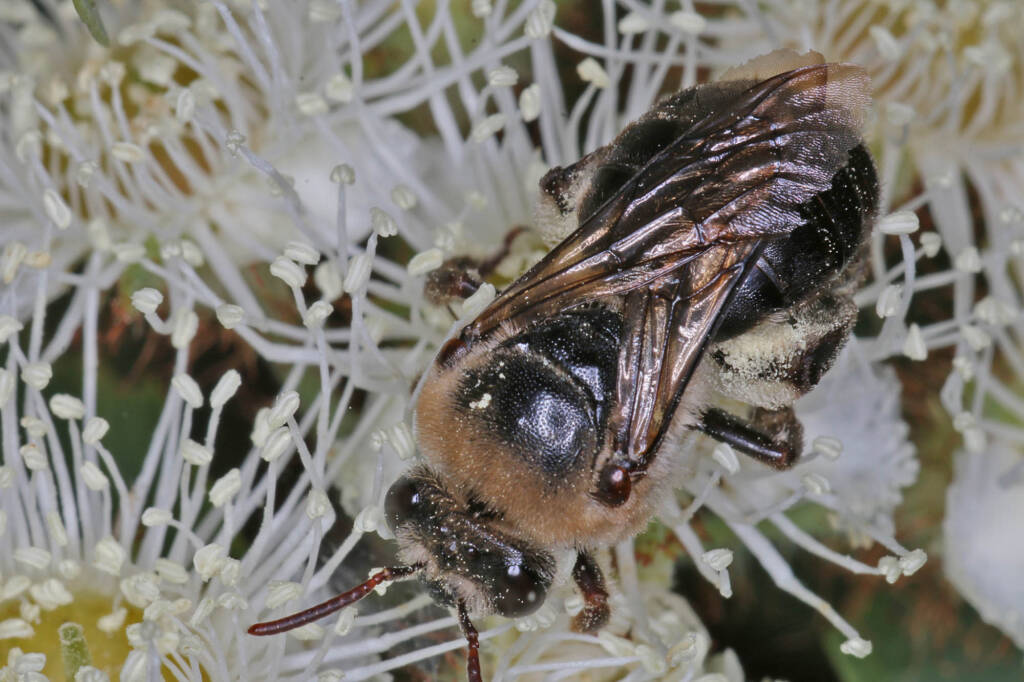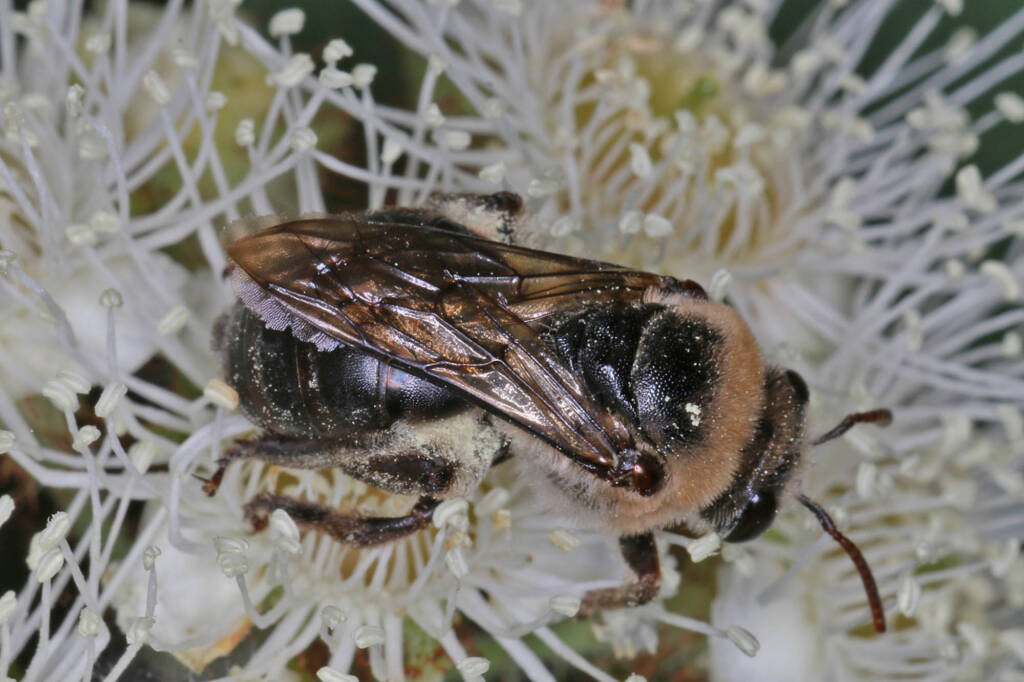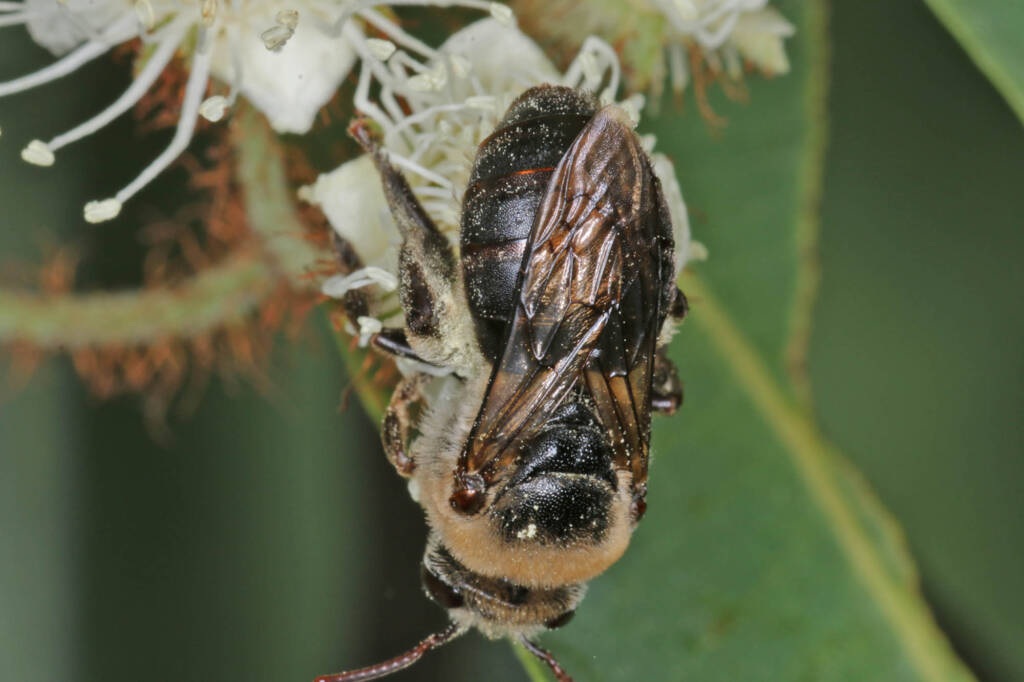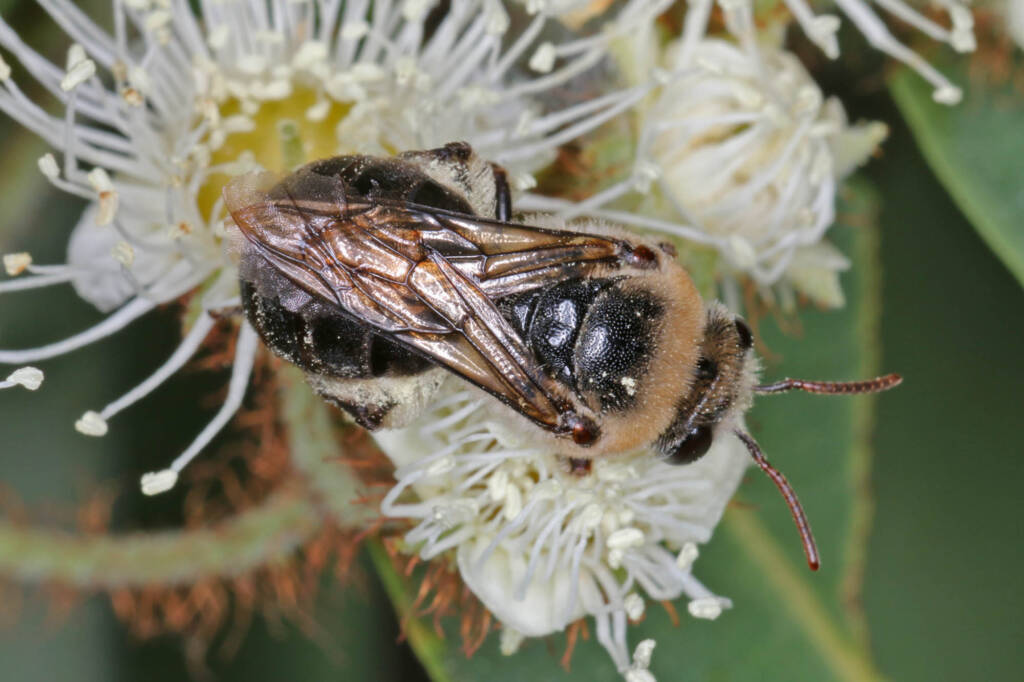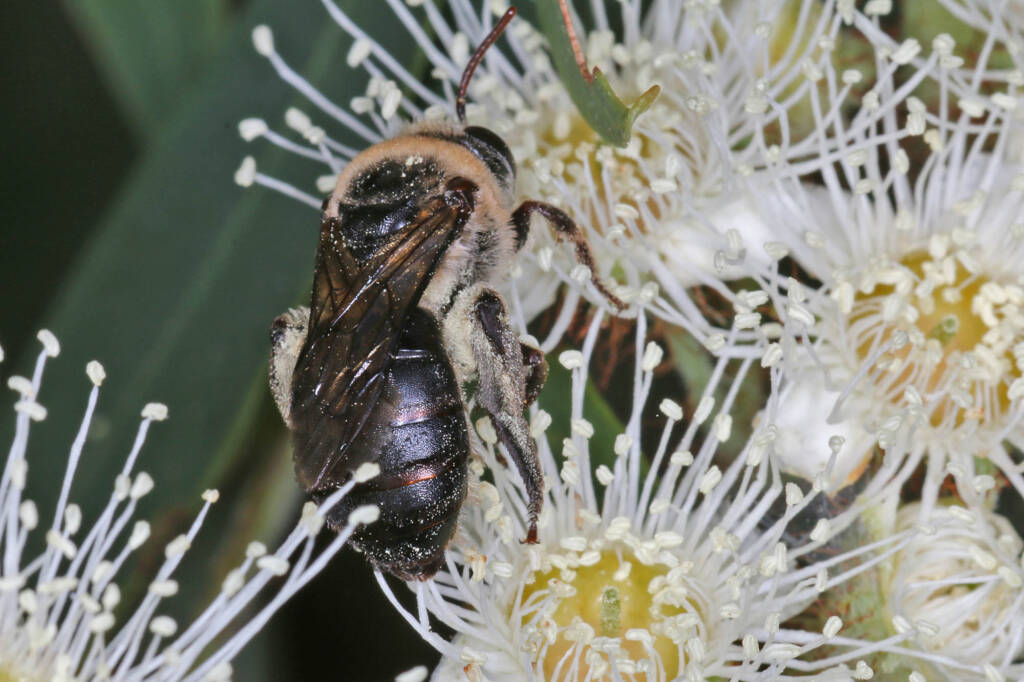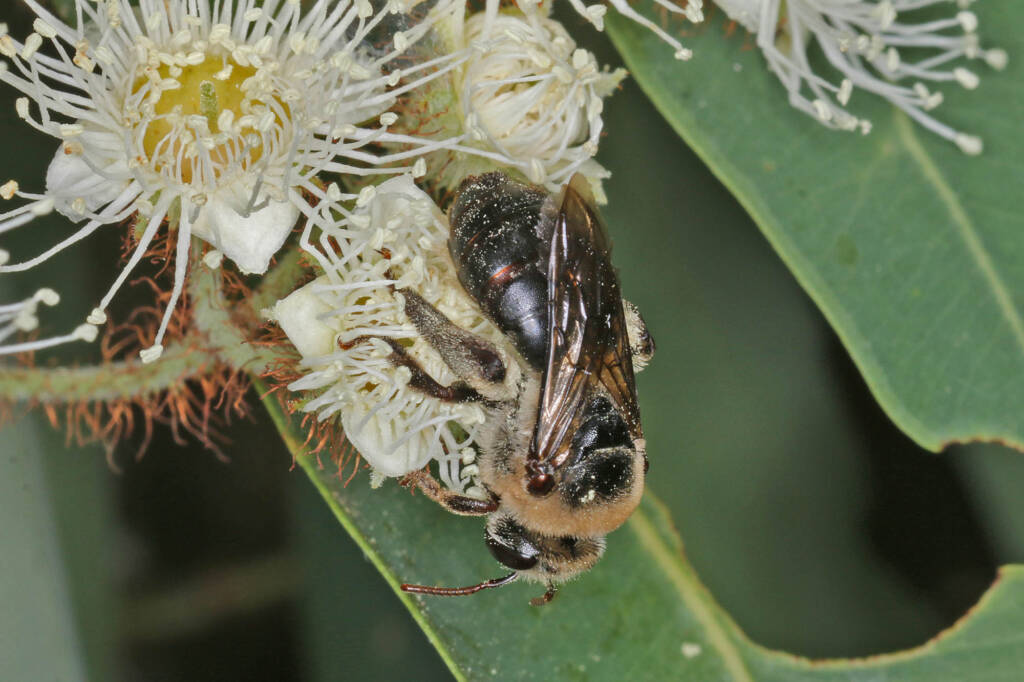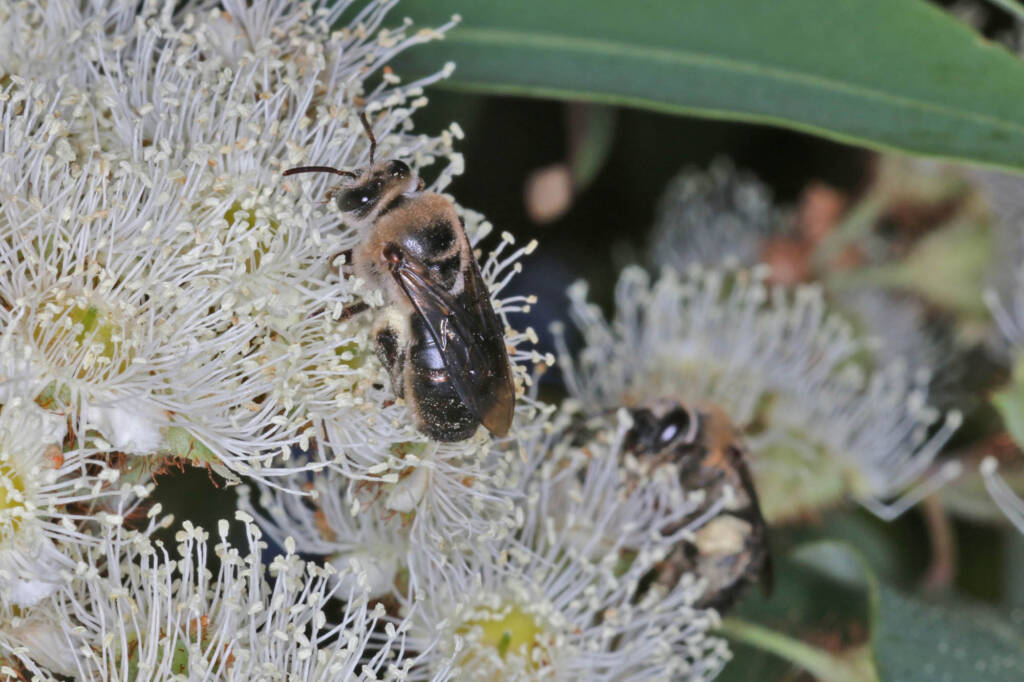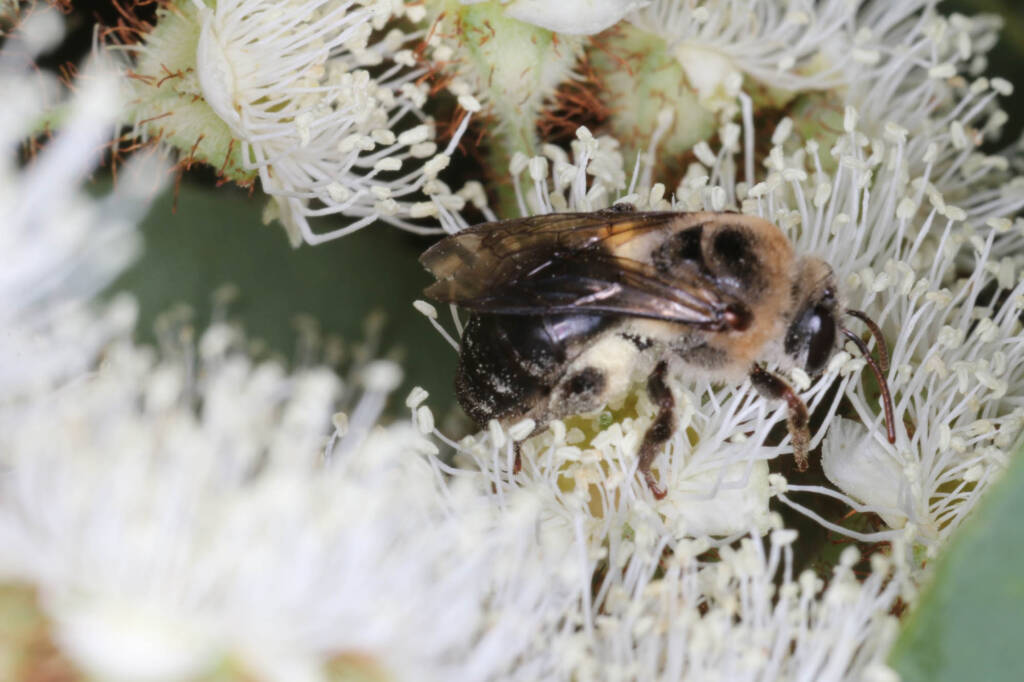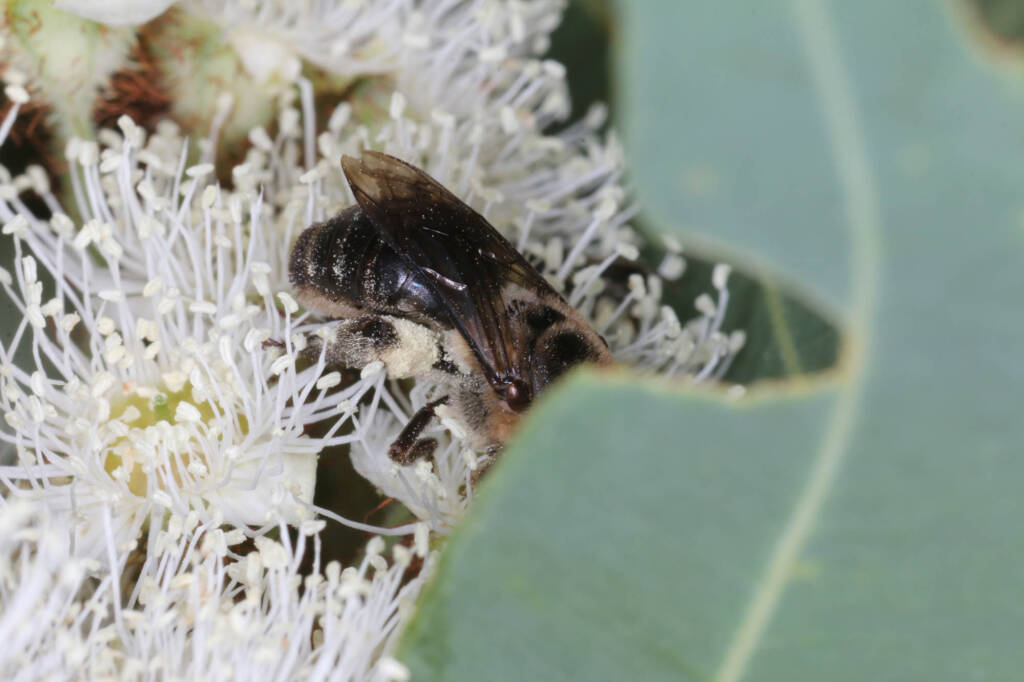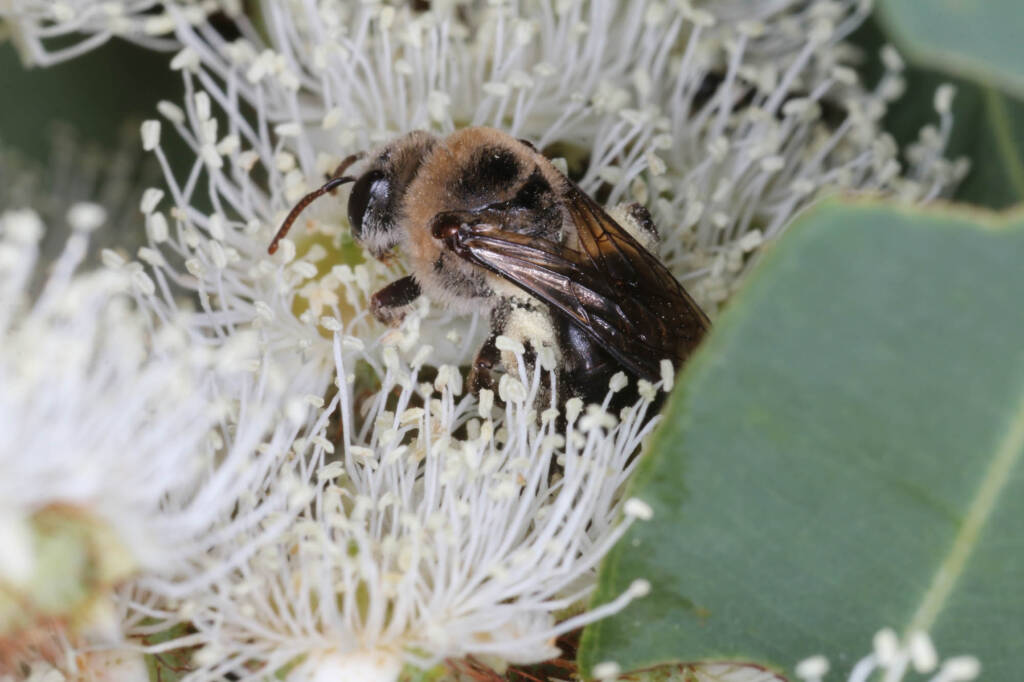ColletidaeAmphylaeus obscuriceps Hylaeus spp – Masked Bee Callomelitta antipodes Leioproctus Neopasiphae mirabilis Paracolletes crassipes Paracolletes nigrocinctus Trichocolletes
Photographs © Marc Newman
Paracolletes (Paracolletes) crassipes are a medium-sized, black, hairy bee that have been recorded on the eastern and the western side of Australia (Atlas of Living Australia, accessed March 2022). In the Western Australian Museum collection, their records reveal that, the species in Western Australia occurs south of a line from Jurien Bay through to Israelite Bay, a widespread occurrence.
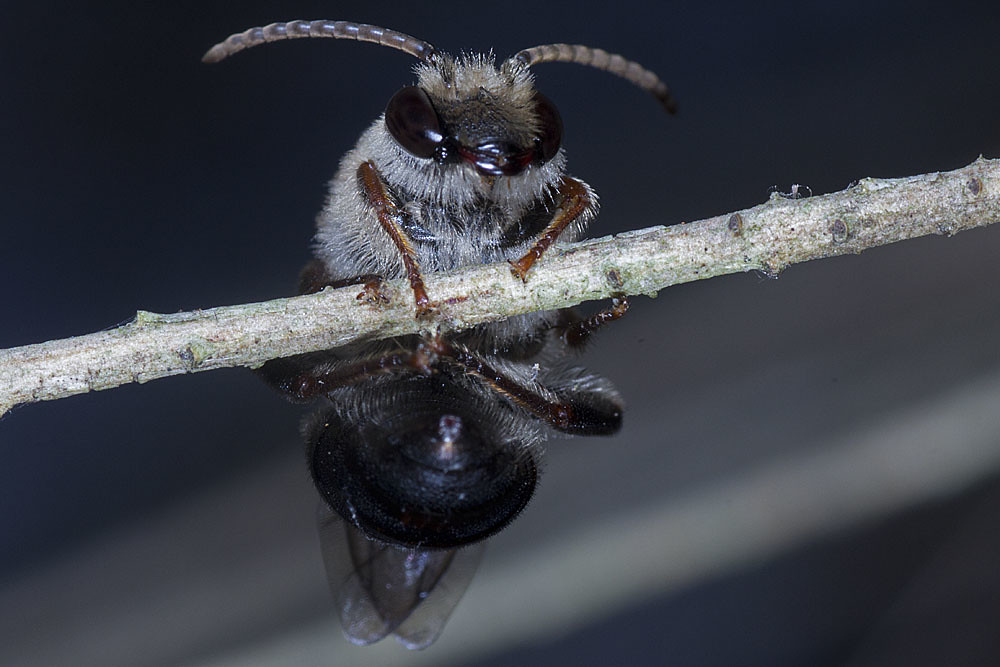
ABSTRACT – Discovery of an extensive nesting aggregation of Paracolletes crassipes in southwestern Western Australia enabled the frst study of the nesting biology of this species and its genus. Nest burrows were excavated in deep loam in a clearing in sclerophyll forest. Like New World Diphaglossinae, females of P. crassipes constructed vertically oriented brood cells with strongly curved, polished necks; larval provisions were partly liquid and partly solid; mature larvae spun cocoons with fat tops and produced a clear liquid (evidently from the Malpighian tubules) at the time
of defaecation. The cocoons of P. crassipes differed from those of other diphaglossines in having solid tops and no covering of the larval faecal masses. Overall, the nesting biology tends to support the inclusion of Paracolletes in the Diphaglossinae.
Nesting biology of the Australian solitary bee Paracolletes crassipes Smith (Hymenoptera: Colletidae) accords with that of the Diphaglossinae, Terry F. Houston, Records of the Western Australian Museum, PDF
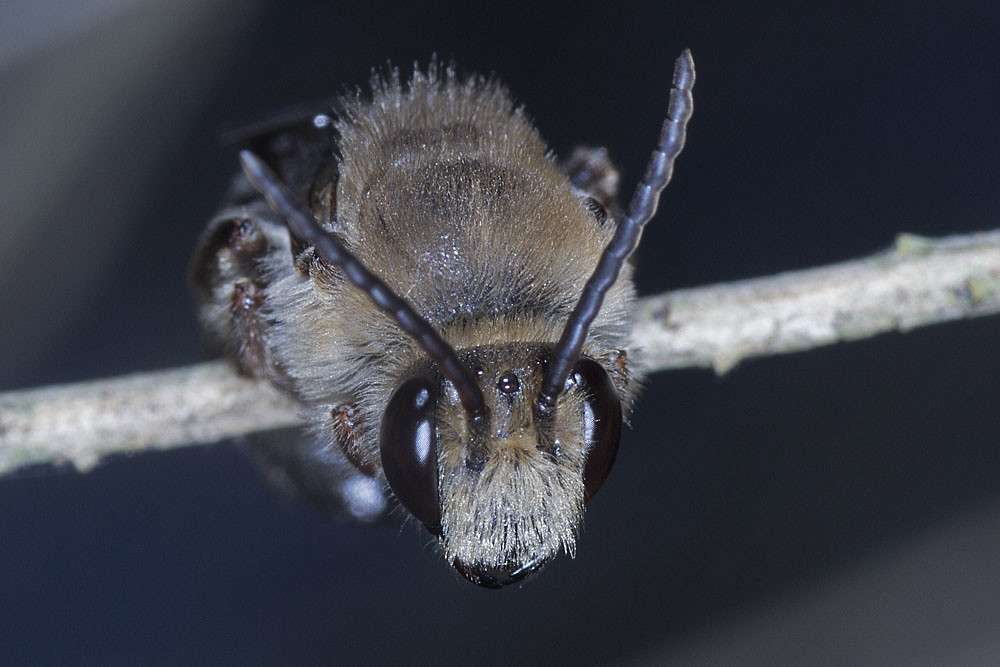
The Paracolletes crassipes are known to create burrows, the nests hidden among grass and leaf litter, as well as in open bare ground. The entrance to the nest is a small lateral tumulus, although research have found that this not always the case. A “tumulus” (is a mound of soil) marking the entrance of freshly dug nests). The burrows would start obliquely, then horizontal for 10 cm or more, becoming steeper. One burrow was followed for 47 cm, at which point its slope was c. 45.2

Paracolletes (Paracolletes) crassipes
Bees of Australia, https://www.publish.csiro.au/book/7786.htm
These bees can easily be mistaken for European honeybees, because they are quite large and very fluffy, but they are in fact Australian. They can often be found buzzing around native garden plants such as lemon myrtles and melaleucas.
The species stands out with its brown hairy thorax.
- Scientific classification
- Kingdom: Animalia
- Phylum: Arthropoda
- Class: Insecta
- Informal: Pterygotes
- Order: Hymenoptera
- Superfamily: Apoidea
- Informal: Apiformes
- Family: Colletidae
- Subfamily: Colletinae
- Genus: Paracolletes
- Subgenus: infrageneric Paracolletes
- Species: Paracolletes crassipes
Footnote & References
- Photographs Paracolletes crassipes, Ballandean, QLD © Marc Newman, Flickr, https://flickr.com/photos/koolbee/albums
- Nesting biology of the Australian solitary bee Paracolletes crassipes Smith (Hymenoptera: Colletidae) accords with that of the Diphaglossinae, Terry F. Houston, Records of the Western Australian Museum, PDF, https://museum.wa.gov.au/sites/default/files/WAMRecords_2020_35_53to62_HOUSTON.pdf
- Paracolletes (Paracolletes) crassipes Smith, 1853, Atlas of Living Australia, https://bie.ala.org.au/species/urn:lsid:biodiversity.org.au:afd.taxon:c5370e13-2f11-4c8e-b79f-4b404d2e539e
ColletidaeAmphylaeus obscuriceps Hylaeus spp – Masked Bee Callomelitta antipodes Leioproctus Neopasiphae mirabilis Paracolletes crassipes Paracolletes nigrocinctus Trichocolletes
BeesBees Anatomy Bee Behaviour Blogging Bees… Bees – image index Amegilla Bee Apis mellifera Austroplebeia australis Austrothurgus Braunsapis sp Ceylalictus perditellus Colletidae Euryglossinae Exoneura Homalictus Hyleoides bivulnerata Lasioglossum Lasioglossum (Chilalictus) Lipotriches Megachile Meroglossa Stenotritidae Tetragonula Thyreus Xylocopa


